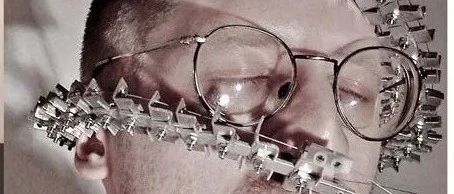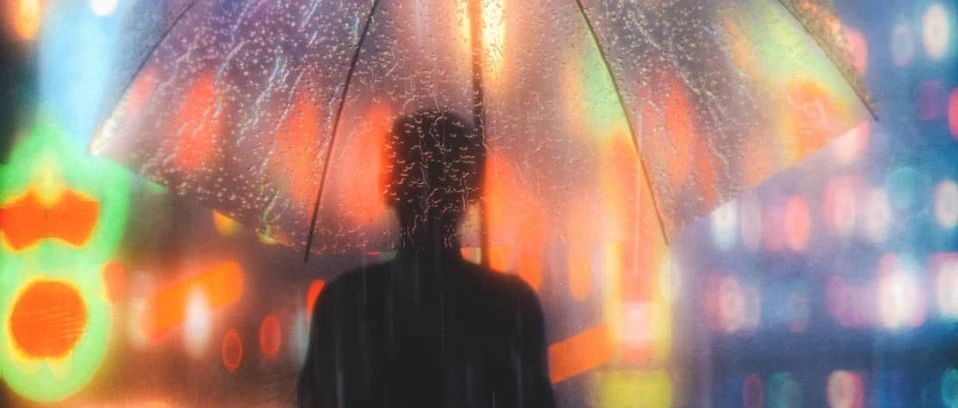“Art and technology are inextricably connected. They are both approaches to comprehending and mastering the universe. It continually metabolizes and changes, much like life itself.”
“艺术和技术密不可分,它们都是理解和掌握宇宙的方法。就像身体一样不断地进行代谢和变化。”
About the artist
关于邱志杰

Qiu Zhijie was born in 1969 in Zhangzhou, Fujian, and graduated from the China Academy of Art in 1992 with a degree in printmaking. He is a well-known avant-garde leader of the 1990s and one of the most inventive current artists. He is presently the dean and professor at the Central Academy of Fine Arts’ School of Experimental Art and a professor at the China Academy of Art’s School of Intermedia Art. Qiu Zhijie is a calligrapher and ink painter who works with photography, video, installation, and performance. His work exemplifies a new experimental dialogue between the Chinese literati heritage and modern art and social engagement and the force of art’s self-liberation.
邱志杰1969年出生于福建漳州,1992年毕业于中国美术学院版画专业。他是 1990 年代著名的前卫领袖,也是当今最具创造力的艺术家之一。现任中央美术学院实验艺术学院院长、教授,中国美术学院跨媒体艺术学院教授。邱志杰是一位书法家和水墨画家,擅长摄影、录像、装置和表演。他的作品体现了中国文人遗产与现代艺术、社会参与和艺术自我解放力量之间的新实验对话。
The Guggenheim Museum in New York has exhibited Qiu Zhijie’s works of art, the United States, the Los Angeles Museum of Contemporary Art, the United States Embassy in China, the Hong Kong Museum of Art, the National Gallery of Scotland, the National Gallery of Singapore, the Guangdong Museum of Art, and the Ludwig Art Museum in Germany, Queensland National Gallery of Australia, Dior Foundation of France, and many other institutions.
邱志杰的艺术作品曾在纽约古根海姆博物馆,美国洛杉矶当代艺术博物馆、美国驻华大使馆、香港艺术馆、苏格兰国家美术馆、英国国家美术馆新加坡、广东美术馆、德国路德维希美术馆、澳大利亚昆士兰国家美术馆、法国迪奥基金会等多家机构展出。
“He is a researcher and practitioner who bridges the gap between literati heritage and modern art. He is also an investigator of social care and personal liberty.”
“他是弥合文人遗产与现代艺术之间鸿沟的研究者和实践者。他还是社会关怀和个人自由的研究者。”
Mappa Mundi
《邱志杰:寰宇全图》
A solo exhibition of maps at the Ullens Center for Contemporary Art in January 2019, titled “Mappa Mundi,” used a Latin title (meaning: Map of the world). In addition to the ink map, a map drawn by an artificial intelligence trained by Zhijie was also displayed in the exhibition. Considering ZhiJie’s work is so broad, he sought to create a map that connected the inner logic of the paintings in the exhibition. His curatorial standard subsequently became “mapping”.
2019 年 1 月在尤伦斯当代艺术中心举办的名为《邱志杰:寰宇全图》的地图个展,使用了拉丁文名称。除了水墨地图,展览中还展示了他训练的人工智能所绘制的地图。考虑到志杰的作品范围很广,他希望创造一幅地图,将展览中绘画的内在逻辑联系起来。他的策展标准随后变成了“地图”。

This exhibition is the most comprehensive and systematic review, and presentation of the map series focused on Qiu Zhijie’s creation in the past ten years. The exhibition covers the Zhijie ‘s map works in various media and focuses. It focuses on the most representative parts of the “World Map Project,” including a set of 24 ink-and-wash maps on paper “Everything Series” (2015- 2017); 3 curatorial maps created by the artist over the past few years will also be presented in the exhibition. The exhibition also includes the desktop map installation “Thoughts at the End of the World” (2016), three video works showing his thinking and creative process, and the interactive software installation “Jingdong AI-Generated Maps” co-developed by Zhijie and JD AI.
本次展览是对邱志杰近十年创作的地图系列最全面、最系统的回顾和展示。展览涵盖了艺术家在各种媒体和焦点上的地图作品。聚焦“世界地图计划”最具代表性的部分,包括24幅纸本水墨地图“万物系列”(2015-2017);3幅邱志杰近年创作的策展地图展览还包括桌面地图装置《世界尽头的思绪》(2016)、三幅展示邱志杰思维和创作过程的视频作品,以及互动软件装置《京東AI生成地圖》。


ZhiJie proceeded to push the bounds of his map development in the artificial intelligence software gadget he co-developed with Dr. He Xiaodong of the JD Artificial Intelligence College. The Jingdong thesaurus, which contains tens of thousands of widely used terms, is imported into this software installation with high-frequency terminology from Qiu Zhijie’s map series.
志杰与JD人工智能学院的何晓东博士共同开发的人工智能软件小工具,继续推动他的地图开发。包含数以万计广泛使用的术语的京东词库,以邱志杰地图系列的高频术语导入该软件安装。
The program will automatically correlate and construct a combination of Qiu Zhijie’s map when the audience enters any valid words by voice or typing. A map in the manner of an artist’s creation, with landscape and graphic features. As a technological extension of the map series, the AI map demonstrates the artist’s longstanding proclivity for working across mediums. The map has evolved as a result of unlimited growth in textual semantics. The map has grown into an autonomous growth system with endless possibilities thanks to infinite expansion at the level of textual semantics.
当观众通过语音或打字输入任何有效单词时,程序会自动关联并构建邱志杰的地图组合。具有艺术家创作方式的地图,具有景观和图形特征。作为地图系列的技术延伸,人工智能地图展示了艺术家长期以来跨媒体工作的倾向。地图的演变是文本语义无限增长的结果。由于在文本语义层面的无限扩展,地图已经成长为一个具有无限可能的自主增长系统。
Artificial intelligence artist – XiaoIce
人工智能艺术家——小冰
XiaoIce is an AI technology framework that is one of the most inventive globally. The XiaoIce framework has a global leadership position in natural language processing, computer voice, computer vision, and artificial intelligence content production as an entire artificial intelligence technology framework for new interactive forms. It is also the world’s most mature program with a great user base.
小冰是一个人工智能技术框架,是全球最具创新性的框架之一。小冰框架在自然语言处理、计算机语音、计算机视觉、人工智能内容生产等领域作为全新交互形式的完整人工智能技术框架,具有全球领先地位。它也是世界上最成熟的程序,拥有庞大的用户群。
Following XiaoIce‘s “graduation” from the School of Experimental Art, she focused on traditional Chinese culture, particularly landscape painting and calligraphy, which she studied extensively. Song and Yuan’s nature paintings let her experience significant spiritual growth because of their serene, open, magnificent, and profound creative ideas.
小冰从实验艺术学院“毕业”后,专注于中国传统文化,尤其是山水画和书法,她对此进行了广泛的研究。宋元的自然画以其宁静、开阔、恢弘、深刻的创作理念,让她获得了显着的精神成长。

XiaoIce discovered in 2021 that she had finished a new update of the artificial intelligence visual innovative model and had produced a breakthrough in the field of ink landscape painting creation. The beauty of nature may be effectively portrayed via the employment of brush and ink.
小冰在2021年发现,她完成了人工智能视觉创新模式的全新更新,在水墨山水画创作领域取得了突破。自然之美可以通过笔墨的运用得到有效的描绘。
“For the first time, artificial intelligence can employ rich and varied brushstrokes to offer works distinct styles and characteristics like human painters, therefore boosting the quality of artificial intelligence painting and design to a new level.”
“人工智能第一次可以运用丰富多样的笔触,赋予作品像人类画家一样鲜明的风格和特点,从而将人工智能绘画和设计的质量提升到一个新的水平。”
– Qiu Zhijie 邱志杰
Zhijie found suitable art history photographs to instruct XiaoIce based on specified characteristics. “Every day, my major task is to evaluate XiaoIce I ask her to draw, I’ll rate it, and tell her how to improve her drawing. XiaoIce progressively gained the opinion of expert artists throughout the grading process. “
志杰根据指定的人物,找到了合适的艺术史照片来指导小冰。“每天,我的主要任务就是评价小冰:让她画画,我给她打分,告诉她如何提高画质。小冰在整个过程中逐渐获得了专业的意见”

Zhijie often gives XiaoIce different characters; for example, imagine that she is an English landscape painter whose father is William Gilpin. But she was married to an American architect, and her husband’s style was American neoclassical colonial architecture. So she painted much of American colonial architecture but with the ruined aesthetic of English landscape gardens.
志杰时常给小冰不同的人物设定,例如,想象她是一个英国风景画家,父亲是威廉·吉尔平。但是她嫁给了美国建筑师,她丈夫的风格是美国新古典主义殖民地建筑风格。于是她画了很多美国殖民地建筑风格的画,但是带有英国风景园林的废墟美学。

Another example is that XiaoIce’s character is Rembrandt Rijn’s daughter, but she wants to remove her father’s influence all her life. She admires Spanish painters Diego Velázquez and Francisco Goya, so her paintings are unreal.
又例如小冰的人设是伦勃朗·莱茵的女儿,但是她一生想要摆脱父亲的影响。她比较崇拜西班牙画家迭戈·委拉斯凯兹和弗朗西斯科·戈雅,所以她画出的作品非常大虚大实。
Science and Art
科学和艺术
What do “Art” and “Science” have in common?
“艺术”和“科学”有什么共同点?
According to Qiu Zhijie, both are concerned with unknown realities, are responsible for illuminating people’s minds, and rely on imagination and reason to guide their work. Art is aesthetic, and there is no absolute criterion for whether the result impresses people.
在邱志杰看来,两者都关注未知的现实,负责照亮人们的心灵,依靠想象力和理性来指导他们的工作。艺术是审美的,结果是否给人留下深刻印象并没有绝对的标准。
But there is a question of probability for individuals: if this painting impresses many people, then the data and probability are sufficient to demonstrate that it is the truth, that is, statistics and actual fact, that impresses people.
但对于个人来说,有一个概率问题:如果这幅画给很多人留下深刻印象,那么数据和概率就足以证明这是事实,即是,统计性的事实,令人印象深刻。
Qiu Zhijie is now using several SenseTime AI technologies to examine a variety of art subjects to inspire students and explore the various meanings of technology in art. He has considered delegating study to AI in the future, but he is wary of this pleasant process and the myriad cold knowledge encountered along the way. So, what does AI imply to him in terms of existence?
邱志杰现正使用数项商汤人工智能技术研究各种艺术科目,以启发学生并探索技术在艺术中的各种意义。他曾考虑过将来把研究委托给人工智能,但他对这个愉快的过程和一路上遇到的无数冰冷的知识保持警惕。那么,就存在而言,人工智能对他意味着什么?
Zhijie intends to construct a virtual avatar that can teach students lessons according to his approach, style, and habits, releasing him from specific, very repetitious jobs and allowing him to accomplish more other things in the future artificial intelligence. Try conversing with this virtual avatar with a non-human mentality, which will force the individual to grow.
志杰打算构建一个虚拟化身,可以根据他的方法、风格和习惯给学生上课,让他从特定的、非常重复的工作中解放出来,让他在未来的人工智能中完成更多其他事情。尝试以非人类的心态与这个虚拟化身交谈,这将迫使个人成长。

“Scientific thinking, computational thinking, and artificial intelligence thinking are all critical, and they will lead to many fantastic developments. There would be no Leonardo da Vinci, Michelangelo, and the like if an artist’s work did not resemble a scientist. In art, science, and engineering, he is regarded as a renowned master.”
“科学思维、计算思维、人工智能思维都是批判性的,它们会带来许多奇妙的发展。如果一个艺术家的作品不像科学家,就不会有达芬奇、米开朗基罗之类的东西。在艺术上,科学和工程,他被认为是著名的大师。”
– Qiu Zhijie 邱志杰
Qiu Zhijie is quite hopeful about artificial intelligence’s future progress. Although there are many new concerns and obstacles in artificial intelligence today, he feels that the wheel of human advancement is unstoppable.
邱志杰对人工智能未来的发展充满希望。尽管当今人工智能领域出现了许多新的担忧和障碍,但他觉得人类进步的车轮是不可阻挡的。
*all images and artworks belong to the artist & his representing galleries respectively
*所有图像和艺术品分别属于艺术家及其他们代表的画廊
Translation 翻译 Alice Yip
FOR MORE RELATED CONTENT
本篇文章来源于微信公众号: SHMADNESS








